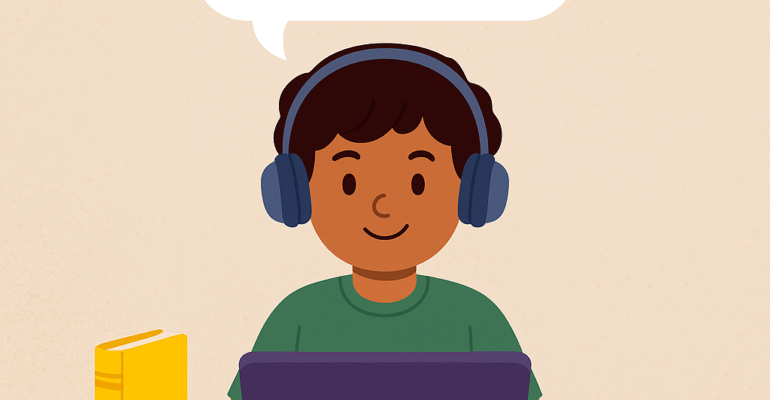Why Your Child Should Learn Tamil and How It Can Boost Their Cognitive Skills
Why Your Child Should Learn Tamil and How It Can Boost Their Cognitive Skills
Why Your Child Should Learn Tamil and How It Can Boost Their Cognitive Skills
As parents, we constantly seek ways to give our children a competitive edge, not just in their academic careers, but in their overall development. We invest in extracurricular activities, sports, and educational toys. Yet, one of the most powerful and enduring gifts you can give your child is a second language. While any language offers benefits, learning Tamil, with its rich history and unique structure, provides a profound advantage. It’s a journey that connects them to a vibrant heritage while simultaneously serving as a powerful exercise for the mind.
This comprehensive guide will explore the profound Tamil language benefits for kids, revealing how this ancient language can serve as a catalyst for enhanced brainpower, emotional intelligence, and a strong sense of identity. From improved memory to better problem-solving, the journey of learning Tamil is a journey toward a more capable and well-rounded individual. We will show you not just the “why,” but also the “how,” offering practical insights into how to teach kids Tamil at home.
The Cognitive Superpower: How the Bilingual Brain Thrives
The human brain is a marvel of adaptability, and during childhood, it’s at its most flexible. Introducing a second language during this crucial developmental period has a transformative effect on a child’s cognitive architecture. This process is a cornerstone of modern research on child development learning Tamil and other languages. When a child constantly navigates between two linguistic systems—the Tamil they are learning and their primary language—it creates a mental workout that strengthens key neural pathways, resulting in what scientists call the “bilingual advantage.”
Enhanced Problem-Solving and Decision-Making
Bilingual children demonstrate superior skills in tackling complex problems and making more rational decisions. The constant mental effort of inhibiting one language while using another trains the brain’s executive function. This translates directly to improved problem-solving skills in other areas of life, such as mathematics and logic puzzles. A child who learns Tamil is not just learning vocabulary; they are unconsciously training their brain to analyze information from multiple perspectives, a skill that is invaluable in academics and beyond.
Superior Memory and Attention
The mental gymnastics of managing two languages strengthens the brain’s working memory. Bilingual children often have a better capacity to remember new information and recall facts. Moreover, they exhibit a greater ability to focus on a single task while filtering out irrelevant distractions. This is a key reason why researchers speak of the “bilingual brain” and the lasting advantages it confers. By learning Tamil, your child is building a stronger, more efficient mental filter, which is a major advantage in today’s world of constant information overload.
Increased Cognitive Flexibility
Cognitive flexibility is the ability to adapt to new situations and think creatively. Learning a second language, particularly one with a different sentence structure and a unique alphabet like Tamil, forces the brain to be more flexible. Children become adept at thinking in different patterns, which boosts their creativity and their capacity for innovative thought. This is a fundamental benefit that contributes to a child’s ability to learn new skills quickly, whether it’s playing a musical instrument, coding, or learning another language in the future. The **bilingual kids cognitive benefits** are truly profound and long-lasting.
A Bridge to Culture and Identity: More Than Just Words
Learning a language is never just about vocabulary and grammar. It’s an immersive experience that connects a child to a culture, a people, and a rich history. For children of Tamil descent, learning the language is a powerful way to bridge the generational gap and feel a deep sense of belonging. It is a vital component of their cultural education for kids.
Connecting with Tamil Heritage and History
Tamil is one of the world’s longest-surviving classical languages, with a documented history spanning over 2,000 years. It is a language with deep literary, artistic, and philosophical roots. Learning the language allows your child to access masterpieces of literature, from the Sangam poetry of ancient times to the works of modern literary giants. It gives them a direct connection to a heritage that has influenced art, music, and spirituality across the globe. This connection builds a strong sense of identity and pride, making them feel like a part of something much larger than themselves.
Strengthening Family Bonds
For many children, particularly those living in the diaspora, a language barrier can create a distance between them and their grandparents or other Tamil-speaking relatives. Being able to converse in Tamil bridges this gap, allowing for more meaningful interactions and a deeper understanding of their family’s stories, traditions, and values. This connection is priceless, allowing them to hear personal histories and wisdom that would otherwise be lost. It reinforces the idea that their family history is a vital part of who they are.
Cultural Understanding in a Global World
A child who learns Tamil not only understands their own culture better but also develops a heightened appreciation for other cultures. The process of learning another language broadens their worldview and helps them see the world through a new lens. This empathy and cultural awareness are invaluable skills for navigating a diverse global society. It teaches them that there is more than one way to think, communicate, and live, making them more adaptable and compassionate global citizens.
Practical Steps: How to Teach Kids Tamil at Home
You don’t need to be a formal educator to start this journey with your child. The most effective language learning happens when it’s integrated into daily life. Here are some practical and fun strategies for **how to teach kids Tamil at home** and make it a natural part of their routine:
Start with the Foundation: Sounds and Letters
Begin with the basics. Introduce the sounds of the Tamil alphabet through songs and simple videos. The Tamil alphabet, with its unique script, can be visually appealing to children. Use colorful charts or flashcards to help them recognize the letters. The “Aana Aavanna” song is a great starting point for making the alphabet fun and memorable.
Make it Part of Daily Routine
Integrate Tamil into your everyday conversations. Start with simple greetings and phrases during key moments of the day. For example, during mealtime, name the foods in Tamil. At bedtime, read a short story or say “Iravu Vanakkam” (Good night). These small, consistent exposures build a foundation of comfort with the language.
Leverage Technology and Media
Children are naturally drawn to screens. Use this to your advantage by introducing them to Tamil through curated content. Search for child-friendly Tamil YouTube channels with rhymes, cartoons, and educational videos. Many interactive apps are also available that use games and puzzles to teach vocabulary and basic sentence structure. These digital tools can make learning feel like playtime.
Addressing Common Parental Concerns
It is normal to have questions and concerns when embarking on this journey. Here are some common ones and how you can address them:
“What If I’m Not Fluent Myself?”
You don’t have to be a native speaker to start. Your willingness to learn alongside your child is a powerful motivator. You can use online dictionaries and language resources to practice. Your primary goal is to create a positive environment and show that you value the language, even if you are not an expert.
“What If My Child Resists?”
If your child seems uninterested, it’s not a failure. It’s a signal to change your approach. Don’t force lessons. Instead, try a different activity—if they don’t like flashcards, maybe they will love singing songs or watching a movie in Tamil with you. The most important thing is to keep it light, fun, and integrated into what they already enjoy.
Conclusion: The Journey to a Brighter Future
The decision to teach your child Tamil is a gift that will keep giving throughout their life. It’s a gift of cognitive empowerment, a deeper connection to their family and heritage, and a more compassionate, open worldview. The **Tamil language benefits for kids** are not just theoretical; they are tangible and transformative. They build a stronger, more capable, and more culturally aware individual.
While at-home activities are a fantastic start, a structured curriculum and expert guidance are essential for building a strong foundation in reading, writing, and grammar. This is where an online academy can be a perfect partner. At Powerkid Tamil, our one-on-one classes and personalized curriculum are designed to work seamlessly with your at-home efforts, turning your child’s playful learning into a confident, lifelong fluency. We are committed to making the process of learning Tamil not just easy, but truly exceptional. Start with a single word or a simple rhyme today, and watch your child’s language skills—and their connection to their roots—grow every day.










